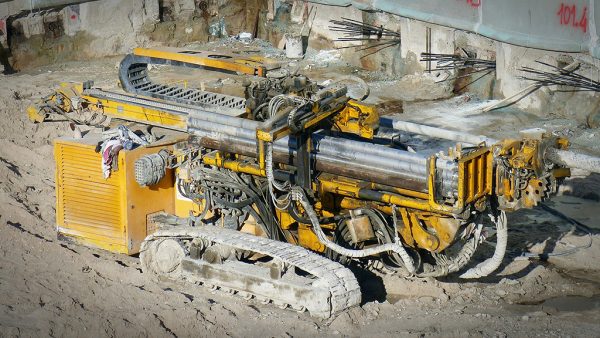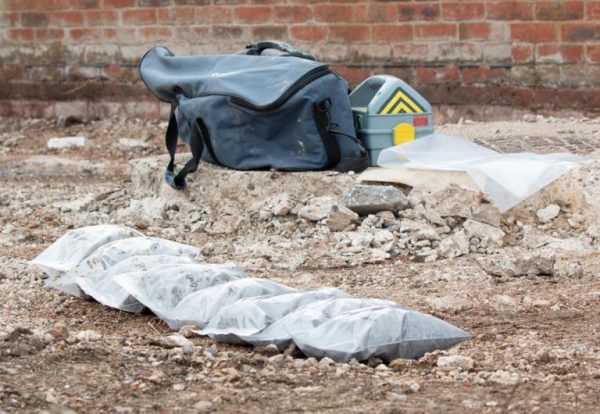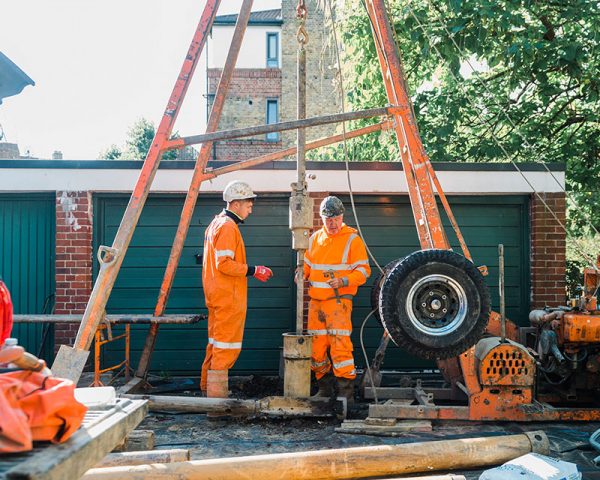Piling shortcuts can be shortsighted
Geotechnical • Industry matters • Regulation
Ground & Water has noticed that an increasing number of clients, who require piling schemes designed, are going direct to drilling companies for the necessary borehole logs and testing rather than using a full-service geotechnical consultancy. While potentially cheaper in the short term, this shortcut has proven to be shortsighted and costly in the longer term.
A concerning trend
 We are highlighting this issue following a recent review of tenders we have lost, where a pile design was required. When we investigated the ‘why?’ behind this, it turned out that these clients went directly to drillers for the logs and testing only.
We are highlighting this issue following a recent review of tenders we have lost, where a pile design was required. When we investigated the ‘why?’ behind this, it turned out that these clients went directly to drillers for the logs and testing only.
As a full-service geotechnical consultancy, we allow for the drilling and in-situ testing, an engineer review, laboratory testing and a factual report summarising it all. It can be interpretive with indicative pile loads if required.
So, we thought we would post this blog to try to explain why we believe the input of consultancies like Ground & Water can be beneficial to your project later down the line.
The first point is that engineer review can yield better data. This is because:
- Geotechnical engineers supervise the drilling works to ensure quality
- They undertake additional in-situ testing (shear vane/hand vane) or consistency index testing alongside SPTs
- They review the samples being recovered alongside the logs to produce a more accurate borehole log.
This is not to say the drillers are incapable of the above. Its just the fact they are very busy drilling and won’t have time to drill down (excuse the pun) into the higher levels of detail.
 An example of how it went…
An example of how it went…
A developer on the south coast needed a 15m deep borehole for a pile design near Southampton. A drilling company was commissioned to undertake the works, drilled the borehole, left samples onsite and produced a log. All well and good, until a review of the log revealed 15m of Made Ground… And the drillers had left site without saying anything.
So, the developer was left with not much! It had a borehole log showing 15m of Made Ground, with no idea on the depth to natural. Therefore, the depth to which piles would need to go was unknown and no adherence to NHBC’s 5m beyond the toe of the deeper pile. Oh yes… And an invoice from the driller.
 This is how it could have gone…
This is how it could have gone…
A developer on the south coast needed a 15m deep borehole for a pile design near Southampton. A geotechnical engineering company was commissioned to undertake the works, using a subcontracted drilling company for the borehole. The works are partially supervised, and it is noted that although the driller thinks they are in Made Ground, the engineer realises that the material is natural. The borehole is bottomed out at 15m after discussion with designers given the SPT’s, thickness of natural proved, and line loads of the building.
Engineers can also review the SPT’s in relation to Hammer Efficiency (SPT N60’s) and review the impact of U100/UT100 and laboratory strength tests on strength/depth design lines. The better your strength vs. depth design line, the smaller diameter and shallower your piles are going to be. This can save you tens of thousands of pounds.
In the example below, a good SI saved the client £18,000.00 in the piling costs.
Also, an engineering firm will pick the best type of drilling rig for your geology and needs. Rigs can be evaluated on quality of sample recovered, time and energy to get to depth and access. Getting the right drilling rig for your requirements can also save you money in the long-term.
Why-getting-the-right-borehole-rig-matters
The moral of this story
Given the financial and time pressures the building industry is under we can see why a cheaper and seemingly faster alternative is an appealing way to go. But considering the amount of regulation we are under and the massive cost of getting it wrong, taking shortcuts concerning Site Investigation is highly risky and at a high risk of backfiring. Ground & Water strives to deliver the best quality cost effective service possible and works in our client’s interests in everything we do.
